• Flags
• Historical Flags
• Historical Flags of the Countrysides
• Meaning/Origin of the Flag
• Coat of Arms
• Historical Coats of Arms
• Meaning/Origin of the Coat of Arms
• Aircraft Roundel
• Map
• Numbers and Facts
• History
• Origin of the Country's Name
• Cyrenaica
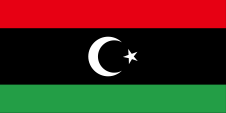
since 2011,
Flag of the National Transitional Council,
de facto National flag,
ratio = 1:2,
Source, by: Wikipedia (D)





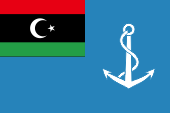
since 2011,
Naval flag,
ratio = 2:3,,
Source: EllsworthSK, Public domain, via Wikimedia Commons




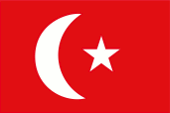
to 1911,
Flag of the Ottoman Empire,
Source, by: Wikipedia (D)



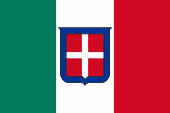
1911–1943,
National and merchant flag of Italy,
ratio = 2:3,
Source, by: Das Flaggenbuch



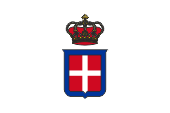
1911–1943,
Flag of the Governor of the Italian colony of Libya,
ratio = 2:3,
Source, by: Das Flaggenbuch




1951–1969,
National flag,
ratio = 1:2,
Source, by: Flags of the World





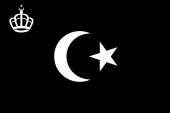
1951–1969,
Flag of the King,
ratio = 2:3,
Source, by: Flags of the World



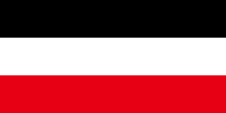
1969–1972,
National flag,
ratio = 1:2 (2:3?),
Source, by: Flags of the World



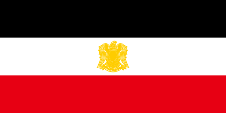
1972–1977,
National flag,
ratio = 1:2 (2:3?),
Source, by: World Statesmen




1977–2011,
National flag,
ratio = 1:2,
Source, by: Flags of the World






1977–2011,
Naval flag,
ratio = 2:3,
Source: commons.wikimedia.org,
Public domain, via Wikimedia Commons




Senussi Emirate (Cyrenaica):
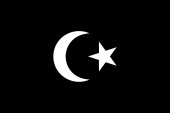
1949–1950,
National flag,
ratio = 2:3,
Source, by: World Statesmen



Tripolitania:

1911–1913,
National flag,
ratio = 2:3,
Source, by: World Statesmen



Tripolitania:
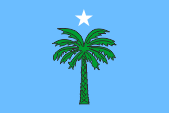
1918–1923,
National flag,
ratio = 2:3,
Source, by: World Statesmen




The current flag of Libya was revived during the rebellion of 2011. It is actually the flag of the Kingdom of Libya, which existed between 1951 and 1969. It shows three stripes in red, black and green in the ratio 1:2:1 with a silver crescent and star in the centre. The variegated colours of the flag seem to be defined today as follows, in hexadecimal: Red = #e70013, which would correspond to Pantone 1788, Green = #239e46, which would correspond to Pantone 355. Libya consists of the three historical countrysides Tripolitania, Cyrenaica and Fezzan. Tripolitania was, exactly like Cyrenaica, ruled by a local dynasty. This persists even under the rule of the Ottomans. These local sovereigns was it temporary allowed to use beside the Ottoman flag even own flags, however if they had momentary a limited autonomy or not. Under the rule of the Italians this principle was maintained into the twenties of the 20th century. During and after the Second World War Libya remains indeed at Italy, but was dismembered in a British and a French occupation zone. Tripolitania and Cyrenaica belonged to the British zone, Fezzan was French. After the Peace of Paris in 1947 Italy has to waive Libya and Libya became a trust territory of the UN. The occupation zones persist. Already in 1949 the UN decided to eject the Cyrenaica in independence under the Senussi-Order and its Emir Mohammed Idris as-Senussi. For whole Libya was promised the independence for the year 1952. The flag of the Senussi Emirate was black with silvery half-moon and star in the middle. After Libya became independet as United Kingdom and the Senussi Emir became the King, this black flag was, added by a crown, maintained as flag of the King. The in context with the achievement of the independence introduces national flag was that of the Cyrenaica, however completed by a red stripe above the black and broad middle stripe and by a green stripe below. The three stripes should represent the three countrysides Fezzan, Cyrenaica und Tripolitania. In context with the nascence of the republic (1969) was introduced a flag in the Nasseritic colours red, white and black, however without a star in the middle. Moreover was introduced a coat of arms, which was very similar to the coat of arms of Egypt. On 1st of January in 1972 was introduced the common flag of the Federation of Arabic Republics, horizontal striped in the colours red, white and black with the coat of arms of the federation (the hawk of the Koraischids) in gold in the middle. The only difference was the inscription below the eagle. When Egypt began peace-negotiations with Israel on the 19th of November in 1977, in Libya were pull down the federation flags and burned. Libya adoped the green flag. The single-coloured green flag of Libya corresponded to the colour of the Islam – but was also a reminder to the "Green Revolution", which proclaimed the in 1969 to the power came Colonel Muammar Al-Gaddafi, who wanted to transform Libya in a food producing country. The colour triad of red, white and black is referred as Panarabian colours. This is not entirely correct. The three colours go back to the late Gamal Abd el-Nasser (1918–1970), Egyptian military officer, politician as well as later the state's president and prime minister, and most important representative of the Arabian nationalism and panarabism. After the national revolution of 1952 the Arabian Liberation Flag was introduced in Egypt, which represented those ideals. It was, at least in choice and arrangement a model for many other Arabian states and state alliances. The colours stand always for the revolution (red), the future (white) and the past (black). The colours have their roots in the flag of the Arabian Revolt during the First World War. Yet the colours of the Arabian Revolt (Arabian Movement) include even green.
Source:
Flaggen und Coat of arms of the Welt,
Die Welt der Flaggen,
Flaggen Wappen Hymnen,
Wikipedia (EN)


since 2021,
Coat of arms of Libya,
Source: Government of National Unity of the State of Libya,
Public domain, via Wikimedia Commons


1969–1972,
Coat of arms of Libya,
Source: Corel Draw 4
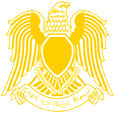
1972–1977,
Coat of arms of Libya,
Source: Corel Draw 4
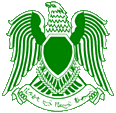
1977–ca.1990,
Coat of arms of Libya,
Source: Corel Draw 4
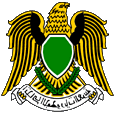
ca.1990–2011,
Coat of arms of Libya,
Source: Corel Draw 4

When there was the proclamation of the republic it was introduced a coat of arms, which was very similar to the coat of arms of Egypt, and showed the Eagle of Saladin. In context with the come into force of the Federation of Arabic Republics (Egypt, Syria, Libya) on the 1st of January in 1972 was also introduced a new coat of arms, the coat of arms of the federation. It showed the Hawk of the Koraischids in gold. The only difference was the inscription on the banner in the catch of the eagle. At the Libyan eagle there was written: "Arabic-Libyan Republic". With the end of the federation on 19th of November in 1977, Libya changed its national coat of arms. The flacon had now green breast shield and facing to the right in the heraldic sense. Probably since the end of the eighties of the 20th century Libya used the hawk in a black-golden design, only the chest shield and the olive twigs remained green and the hawk peeks to the left side again.
Source:
Flaggen und Coat of arms of the Welt,
Die Welt der Flaggen,
Flaggen Wappen Hymnen,
Wikipedia (EN)


1962–1969,
Aircraft Roundel,
Source: by Wikipedia (EN)

1969–1977,
Aircraft Roundel,
Source: by Wikipedia (EN)

1977–2011,
Aircraft Roundel,
Source: by Wikipedia (EN)
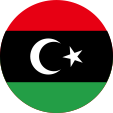
2011–2014,
Aircraft Roundel,
Source: by Wikipedia (EN)

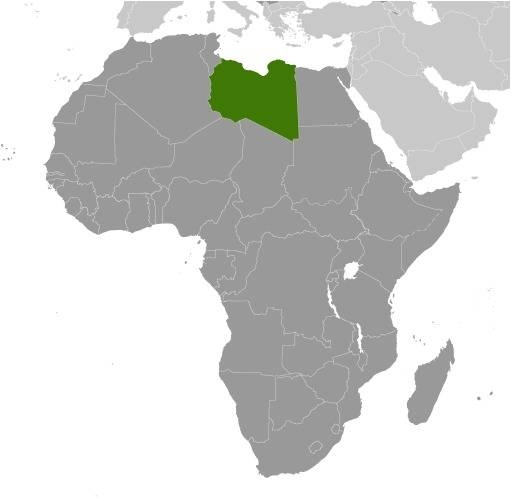
Source: CIA World Factbook
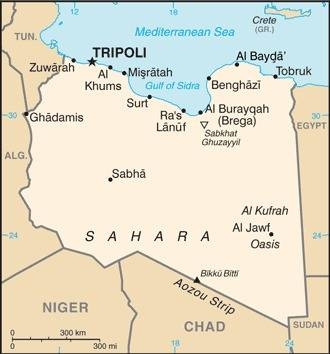
Source: CIA World Factbook
Fezzan, Cyrenaica, Tripolitania,
Aozou:
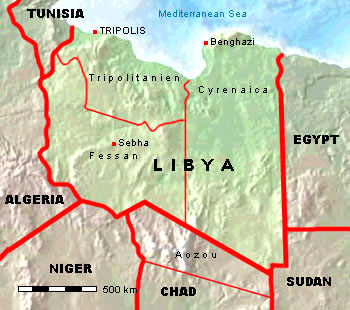
Source: Freeware,
University of Texas Libraries,
modyfied by:
Volker Preuß

Area: 679.360 square miles
Inhabitants: 6.900.000 (2020), thereof 97% Arabs and some Berbers (Tuareg)
Religions: 97% Muslims (Sunnis), Christians (mostly Catholics)
Density of Population: 10 inh./sq.mi.
Capital: Tripoli (arabisch: Tarabulus), 1.780.000 inh. (2007)
official Language: Arabic
other Languages: Tuareg languages
Currency: 1 Libyan Dinar (LYD, LD) = 1000 Dirhams
Time Zone: GMT + 2 h
Source:
Wikipedia (D),
Länder der Erde

500 B.C. · colonization of the Cyrene (Cyrenaica) by Greek, colonization of Tripolitania by Karthago
201 B.C. · Karthago has to cede Tripolitania to the Roman Empire after the 2nd Punic War
74 B.C. · conquest of Cyrene (Cyrenaica) by the Roman Empire
395 · at the partition of the Roman Empire the Cyrene (Cyrenaica) comes to the East Roman Empire (Byzantium), and Tripolitania to the West Roman Empire
439 · the Vandals conquer Northern Africa and incorporate Tripolitania into their Empire
533 · the Vandal's Empire becomes conquerd by Byzantium
642–643 · conquest of Cyrene (Cyrenaica) by the Arabic Califate
667–670 · conquest of Tripolitania by the Arabic Califate, in the afteryears immigration of Arabs, islamization, broadly expulsion of the original inhabitants
1509–1551 · Tripoli is a Spanish colony
1521 · conquest of Cyrenaica by the Ottoman Empire, incorporation as Province of Barka
1551 · conquest of Tripolitania by the Ottoman Empire, incorporation as Province of Tripoli
ca. 1560 · conquest of Fezzan (Tuareg State) by the Ottoman Empire, incorporation as Province of Fezzan
1911–1912 · Italian-Turkish War, Italy conquers Tripolitania and Cyrenaica
1925 · Italy conquers Fezzan
1934 · summary of the Italian possessions of Tripolitania, Cyrenaica and Fezzan to the Colony of Libya (Libia)
1939–1945 · Second World War: Fessan becomes occupied in 1942 by troops of the Free France, Tripolitania and Cyrenaica become conquered between 1942 and 1943 by British troops, division in a British and a French occupation zone
1947 · Peace of Paris, Italy has to renounce Libya, Libya becomes a trust territory of the UNO
1949 · Cyrenaica becomes independent under the Senussi-Order and its Emir Mohammed Idris as-Senussi
24th of December 1951 · whole Libya becomes independent as United Kingdom of Libya (the countries Tripolitania, Cyrenaica and Fezzan are autonomous countrysides and form a federation), Emir Mohammed Idris as-Senussi becomes King Idris I., the USA and United Kingdom get military bases (Wheelus Field, Tripoli, Mursuq and Tubruq)
15th of April 1963 · new constitution, the three countries become dissolved and partitioned in administration units
1st of September 1969 · nationalist and Arabic military officers under leadership of Colonel Muammer Al-Ghadafi unseat the monarchy and proclaim the republic
1970 · the USA and United Kingdom have to leave their bases, Italian settlera and all Jews have to abandon the country
1972–1977 · only formal federation with Syria and Egypt in the Union of Arabic Republics (until the 19th of November in 1977)
1973 · Libya occupies the Aozou Stripe in the north of Chad
1977 · new constitution, Libya names itself now Socialistic
Libyan Arabic People's Jamahiriya (Jamahiriya = state of the masses)
1980–1989 · Libya is concerned in the civil war of the Chad
1980–1988 · Libya supports the Iran in the First Gulf War (Iran against Iraq)
1986 · military intervention of the USA against Libya, bombardment of Tripoli and Benghazi
1989 · peace treaty with the Chad, the Aozou Stripe is furthermore occupied by Libya
1991 · Libya supports the Iraq in the Second Gulf War (USA against Iraq)
1992, 1993 · sanctions of the UNO against Libya
1994 · Libya evacuates under the eyes of the UNO the Aozou Stripe in the Chad
1999 · the UNO sanctions of 1992 and 1993 become terminated
2005 · normalization of the international relationships
February 2011 · at first demonstrations, later open rebellion against the rule of Colonel Muammer Al-Ghadafi, especially in Cyrenaica, gradual and steady advance of the rebels under fire of NATO
22nd of August 2011 · conquest of Tripoli by Democrats, overthrow of the rule of Colonel Muammer Al-Khadafi, a National Transitional Council takes over
20th of October 2011 · Colonel Muammar Al-Khadafi is killed during fights in his hometown of Sirte after his capture he becomes brutally tortured and murdered by the rebels
6th of March 2012 · the Region of Cyrenaica declares itself for autonomous
2012–2021 · Libya is divided into areas of various warlords and militias, including Islamic (in Cyrenaica) and radical Islamic militia (in Tripolitania), ethnic militias of the Tubu and Tuareg (in Fezzan), and troops of Al-Qaeda and Islamic State (coastal cities), there are two major warring factions, with an own Libyan Parliament: Council of Deputies (in Tobruk, Cyrenaica, internationally recognized), General National Congress (in Tripoli, Tripolitania, internationally not recognized)
05.02.2021 · Council of Deputies and National Congress agree on one joint presidency and a prime minister holding a transitional government to form until the next free elections
Source:
Atlas zur Geschichte,
Wikipedia (D),
Discovery '97,
Volker Preuß

There are three theories about this:
1.)
The Greek name "Libya" has its roots in an initially by the Egyptians in the antique used word. They had designated with this all territories which border in the west on their empire. The Greek took this word over and used the word "Libya" for whole Africa except Egypt.
2.)
The name "Libya" is the Arabic name of the Berber moon goddess "Kar", who was worshipped not only in Libya but throughout whole North Africa. It is said to translate as "dripping with rain".
3.)
The word "Libya" means "flame" or "inflamed" in an ancient, not exactly identifiable language, perhaps a reference to the hot stone desert Hammada al-Hamra.
Source:
Handbuch der geographischen Namen,
Atlas der wahren Namen,
Volker Preuß

Since the end of the reign of Colonel Muammar Al-Khadafi, the contrast between the east and the west of the country becomes more common. The West is regarded as liberal, the East as religious. The east of Libya is the region of Cyrenaica, which has seen itself in discrimination under Khadafi, and now wants to compensate for this. There are plans to divide Libya in the three former regions of Tripolitania, Cyrenaica and Fezzan, a policy that is operated primarily out of Cyrenaica. The division plans are quite specific, and the intention to expand the country Cyrenaica to the Libyan oil fields and oil ports contain a lot of political dynamite. The flag issue seems already decided to Cyrenaica.
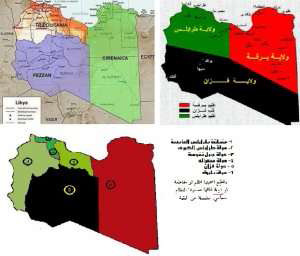
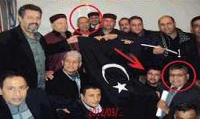
Source: julius-hensel.com


![]()


























































